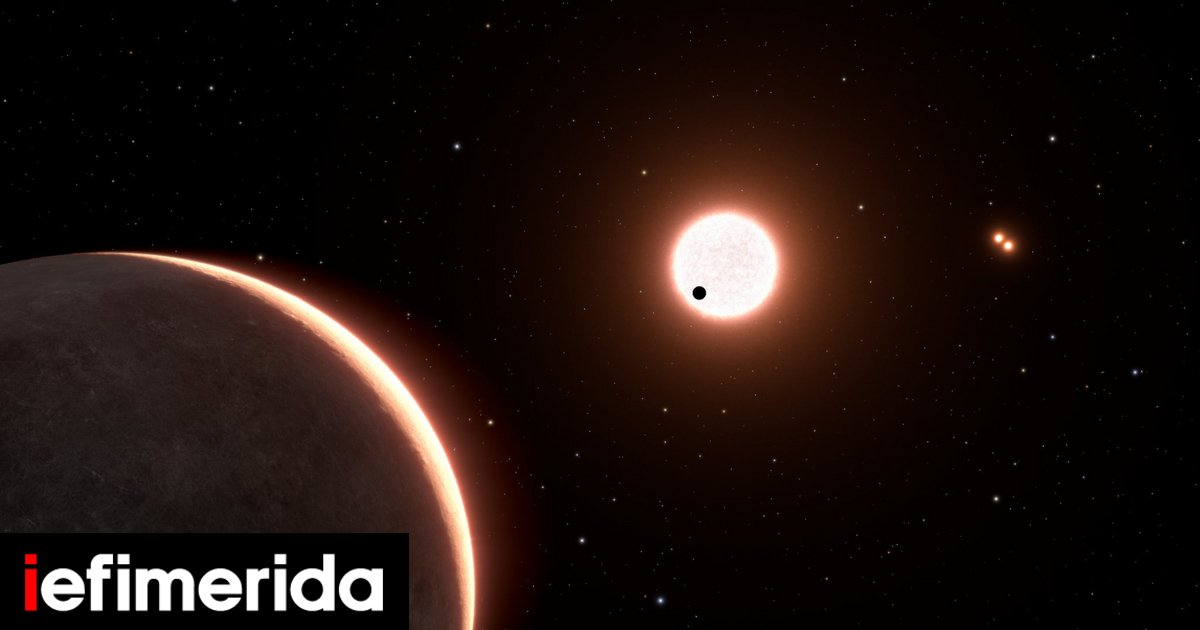
NASA’s Hubble Space Telescope has measured the size of the closest Earth-sized exoplanet passing through the face of a nearby star.
This alignment, called a transit, opens the way for further studies to see what kind of atmosphere, if any, this rocky world has.
The minor planet, called LTT 1445Ac, was first discovered by NASA’s Transiting Exoplanet Survey Satellite (TESS) in 2022. But the geometry of the planet’s orbital plane relative to its star as seen from Earth was uncertain because TESS does not have the required optical resolution. . This means the discovery could be a so-called grazing transit, where the planet crosses only a small portion of the disk of its parent star. This would give an inaccurate lower bound on the planet’s diameter.
“There was a possibility that this system had poor geometry, and if so, we would not have measured the correct size. We were able to get to its diameter thanks to Hubble’s capabilities,” said Emily Bass of the Harvard-Smithsonian Center for Astrophysics in Cambridge, Massachusetts.
Hubble’s observations show that the planet makes a normal complete transit of the star’s disk, resulting in an actual size of only 1.07 times the diameter of Earth. This means that the planet is a rocky world, like Earth, with roughly the same surface gravity. But at a surface temperature of about 500 degrees Fahrenheit, it’s too hot for life as we know it.
The planet orbits the star LTT 1445A, which is part of a triple system consisting of three red dwarf stars located 22 light-years away in the constellation Iris. The star has two other reported planets larger than LTT 1445Ac. There is a tight pair of two other dwarf stars, LTT 1445B and C, about 3 billion miles away from LTT 1445A. The alignment of the three stars and the orbit of the BC pair indicate that everything in the system is coplanar, including the known planets.
“Transiting planets are exciting because we can characterize their atmospheres with spectroscopy, not only with Hubble but also with the James Webb Space Telescope. Our measurements are important because they tell us that this is a very close terrestrial planet. We look forward to pursuing observations that will allow us to better understand Because of the diversity of planets around other stars.
The Hubble Space Telescope is an international collaborative project between NASA and the European Space Agency. NASA’s Goddard Space Flight Center in Greenbelt, Maryland, operates the telescope. The Space Telescope Science Institute (STScI) in Baltimore, Maryland, conducts science operations on the Hubble Telescope. STScI is operated for NASA by the Association of Universities for Research in Astronomy, Washington, DC
SpaceX: The second attempt to launch the unmanned Starship spacecraft also failed

“Avid problem solver. Extreme social media junkie. Beer buff. Coffee guru. Internet geek. Travel ninja.”





More Stories
GTA 6: New release window for Rockstar Games’ coveted game
Katerina Kenorghiu: What was it like before plastic surgery
There is bad news for all versions of Assassin’s Creed Shadows